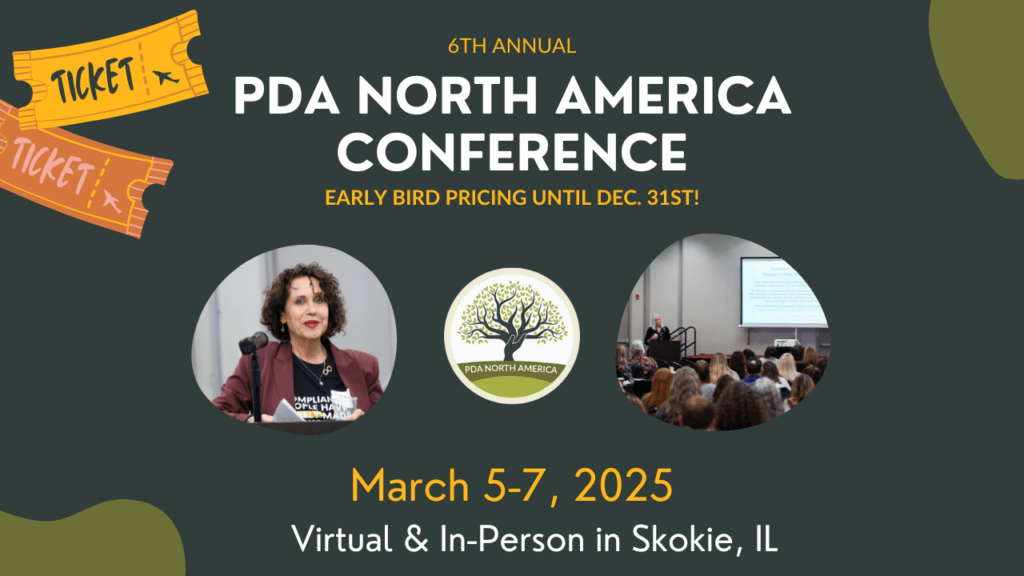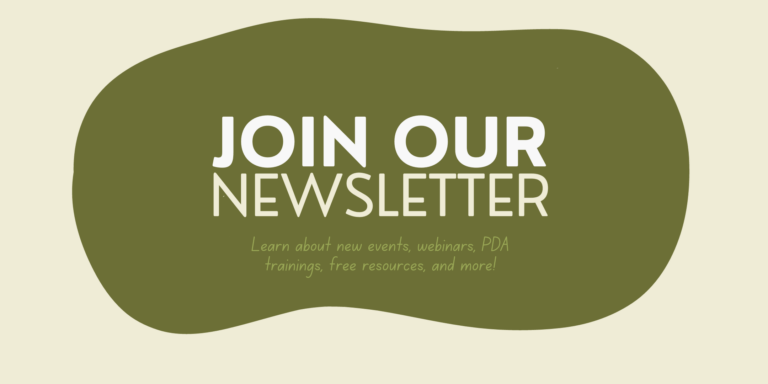by Elise Jacobson, LICSW of The PDA Practice Corner
PDA friendly practice creates relationship through demand avoidance, not despite it. It’s the explicit use of the “PDA emotional filter” that runs experiences through it and then decides if it will resist or engage. The FILTER holds these feelings in place and demands we stay there with our client relating through resistance.
Resistance is not going to prevent client work, it is what makes up the work! It is how someone with PDA reduces their anxiety (as they leave themselves the option to avoid) while still remaining there partially, but not fully engaged. Resistance is the noise created by activation of the PDA emotional filter which considers if it will avoid a demand.
But let’s look at the FILTER more closely. The “PDA emotional filter” used to navigate anxious avoidance works by taking something, in this case, entering therapy, and dividing it into two opposing poles.
The PDA adult can search for the emotion and thinking that lives between the poles and then begin a search for context and understanding.
If your client is using a lot of words with no context (looking for how to navigate between two poles) they are resisting, you and the therapy. How is that so? Words with no context resists a fixed settled viewpoint. In resistance you are witnessing your client stop to run their emotions through demand avoidance.
The struggle to find clarity of context is often resisted as those with PDA take in so much information. At the same time the need for context clears confusion and develops understanding. it is overwhelming work to make sense of experience.
You as the therapist can help shoulder the work and this is the beginning of an alliance!
Your goal as a therapist is to create a space where your client feels no pressure to decide what they think.
This can create a great deal of relief and you will notice thinking slow and anxiety diminish.
Disengagement with you occurs when your client has overwhelmingly strong feelings of frustration and an awareness of the energy needed to find context.
As their therapist you will see their disengagement and must respect it, even, elicit it when needed. It’s a natural and effective boundary.
In the therapy space, more often than not it is direct language that triggers demand avoidance. Most therapists get stuck here.
Your first job here is to reduce the intensity or pressure in the interaction using validation and normalization of that moment in the therapy, the content being discussed, and their experience of you.
You will use direct communication. We all do. But if your client disengages actively elicit disengagement by stopping the work and use only validation and normalization to calm the nervous system. Then jump to the big picture using the poles to explore for understanding of what happened.
If the therapist actively engages the person with PDA in this manner fully autonomous choices will unfold as well as the feelings stuck in the poles. Your client will experience connection and coregulation. And you did GOOD WORK.
You will enter the process of engagement and disengagement over and over during the course of therapy. This is how the emotional life is navigated and always will be. When you normalize and validate this you are allowed to enter it and bring it to conscious awareness regularly.
Well then, how does a therapist search for the poles using the “emotional filter”? What am I actually talking about?
I refer to this as the effort to “JUMP out of details INTO the Big Picture”. You can do this by reaching for questions that encompass it. The big picture questions at the start of therapy may be “Is therapy important and meaningful? “Am I someone you can talk to”, “Do you wonder if this is a waste of your time”, or “can you hope for change”?
There is no right or wrong answer. Your client will be able to access the exploration of the poles and feel no pressure. In this case, the poles would be TO DO THERAPY OR TO NOT DO THERAPY.
Your client will use the filter to ground themselves in the moment and find their footing again. It is the therapist’s work to help verbalize the poles and then get out of the way so that the person with PDA has this space for themselves to think. Your client can then consider your views with a calm nervous system.
Autism is a difference of communication. Someone with the PDA profile has words, and many nuanced understandings but struggles to understand themselves or others actively in everyday life in ways even they don’t always see clearly.
Communicating for understanding is therefore one of the biggest challenges for the person with PDA! It will help them understand themselves when they find ways with you to be understood.
An effort to disengage and resist communication can then be seen as a personal boundary and a pause to rest. It is neither positive nor negative just necessary to reduce anxiety while becoming active and established in their own therapy.
I have created therapy spaces like this that have lasted for years. To me they look and feel like a frequent therapy impasse. There is confusion, mine or theirs, and then frustration with an urgency directed toward me to understand them.
I have had the privilege of listening to gifted and insightful process as a result. “Big picture questions” have quickly generated profound meaning and insight. I have tried to deeply listen and absorb it, so I reflect back what they have shared. My clients with PDA are profoundly intelligent people and therapy like this is very interesting and powerful work.
~Therapists, please know: You can do this! It may feel like one of the hardest parts of providing therapy when you work with frequent resistance. It exposes you to immediate transference and your own counter transference. But being relational in your treatment style in whatever way works for you will help you in every aspect of your practice.
Thank you for reading this inaugural writing about PDA in the Therapy Space part 1. If you found it helpful to your practice look for part 2 coming up soon.
Elise can be reached at EliseJacobsonLICSW@gmail.com to answer questions about her work.
She runs case consultation groups for PDANA and has a busy private practice in Acton, Ma, focused on the needs of PDA parents and PDA adults while also raising her own much older PDA’ers.
Elise is a graduate of Brandeis and Yeshiva and has been in practice for 32 years almost always working with PDA but never realizing it until just 3 years ago when she first learned of PDA from PDA North America.
She writes about PDA practice to inspire therapists to take up this important work and has been mentoring and guiding therapists locally through consultation and study groups and offered a guest lecture on PDA practice work at Northeastern. You can read more of her thoughts on Facebook at The PDA Practice Corner.







